Sierra de las Minas, Chipi-Chipi & La Bella
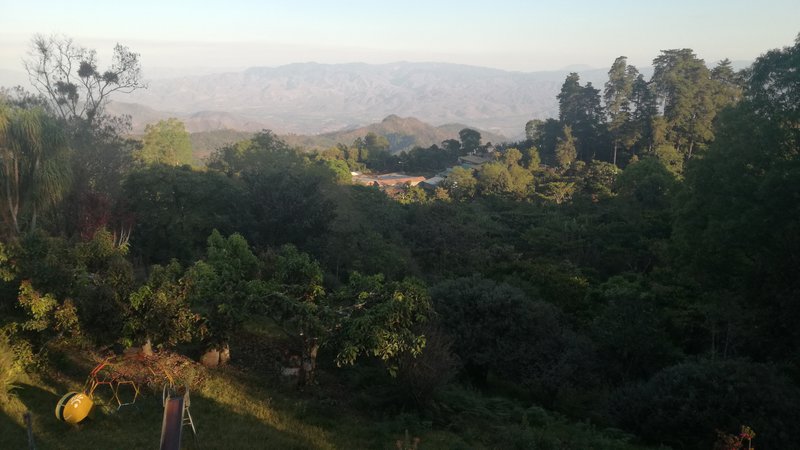
Finca La Bella - Sierra de las Minas, Department of Progreso, Coban
La Bella was undoubtedly one of our most interesting stages in Guatemala. Reaching this place is like entering another world. We had already heard of the famous chipi-chipi - the light and permanent rain characteristic of the area.
But the most curious thing about the road from Guatemala City to the farm was to experience the sudden change of landscape. Because to reach La Bella farm located in the department of Progreso, Sierra de las minas, we pass through a desert strip and find a dry land of stones hostile to any type of vegetation. However, once we pass from the other side of the mountain, the panorama begins to change. It becomes greener and greener and we feel then a growing emotion to find an increasingly lush vegetation, promise of a beautiful view.
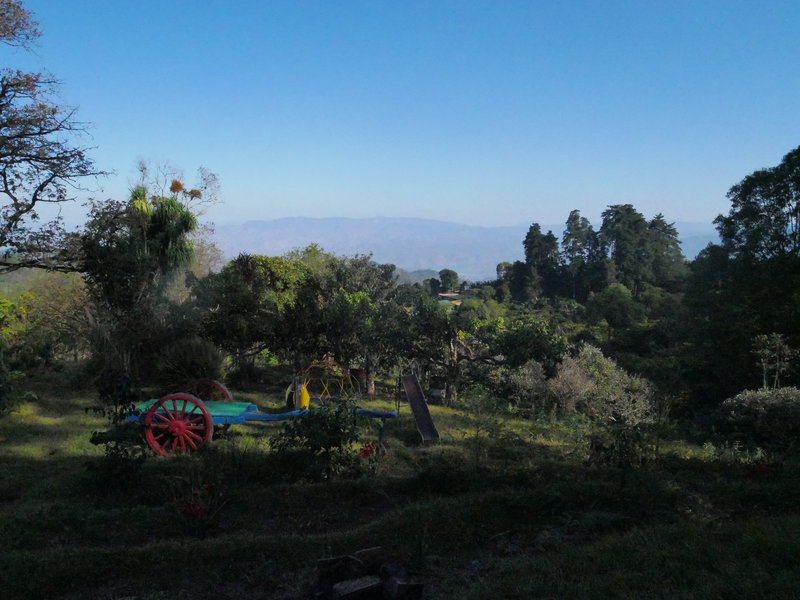
Teo - Teodoro Enrique Engelhardt Ortega – is the owner of the La Bella farm where we stayed for one night. It is a family farm that comes from his grandfather, one of the pioneers who brought coffee in this area.
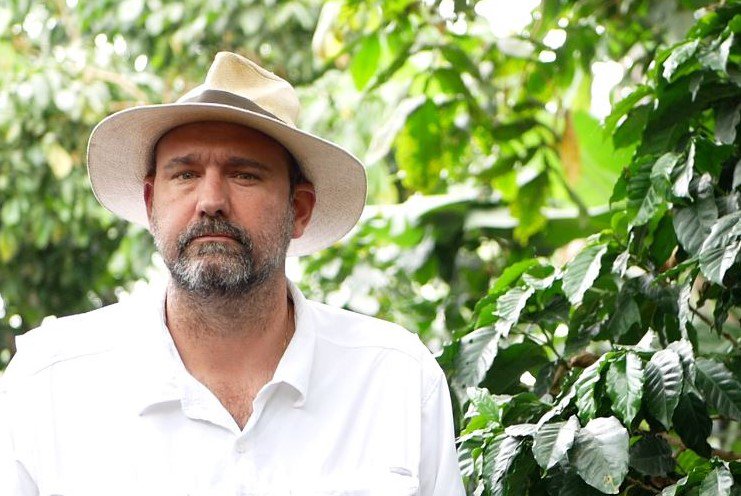
It’s a farm where work is organized with the families who migrate in the area for the coffee season. They leave their homes and their lands for a few months to come and cut coffee.
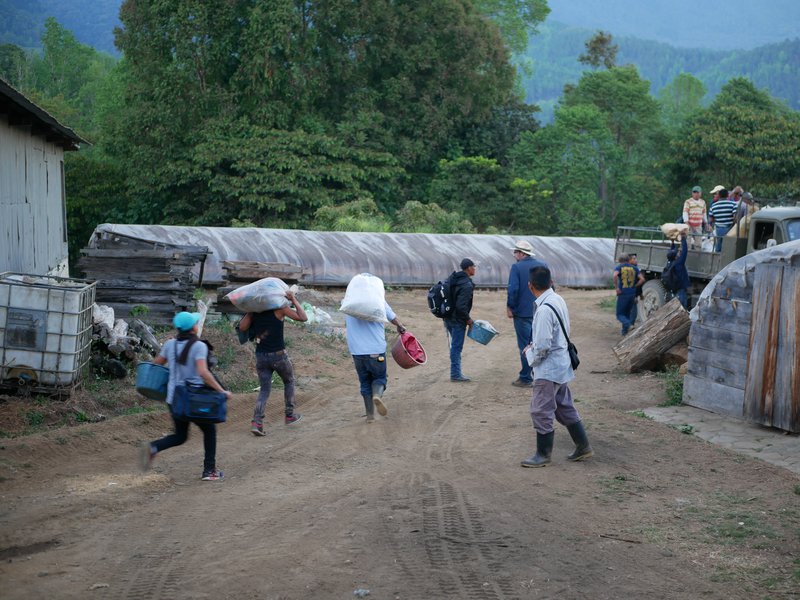
It should also be noted that in La Bella grow many traditional varieties- Bourbon, Caturra, Catuai, Pache and Typica - and some new ones such as Pacamara, Villa Sarchi, Catimor. Moreover, the farm has been several times winner of the famous Cup Of Excellence competition.
"This micro climate, this terroir gives very interesting features in cup"
Teo starts by explaining some characteristics of the region and how they influence the coffee, giving it a different profile from other regions. The Sierra de las minas, benefits from a microclimate very different from everything that can be found in Guatemala. It is a cloud forest and the air of the desert strip reaching the mountainous area generates a condensation that gives the famous chipi-chipi.
Temperatures are lower and usually the harvest time is not the same as in the rest of the country. It usually begins in mid-February and ends at the end of April / beginning of May. The soils there are mainly clayey, (loamy clays). The terroir, the variety and the atypical climate give the coffees of this region a very distinct cup.
"We usually have very round profile coffees." But it is necessary to have a thorough process focused on quality." Any coffee can be very good but if we don't treat it well and if rubbish comes in, rubbish will come out," says Teo.
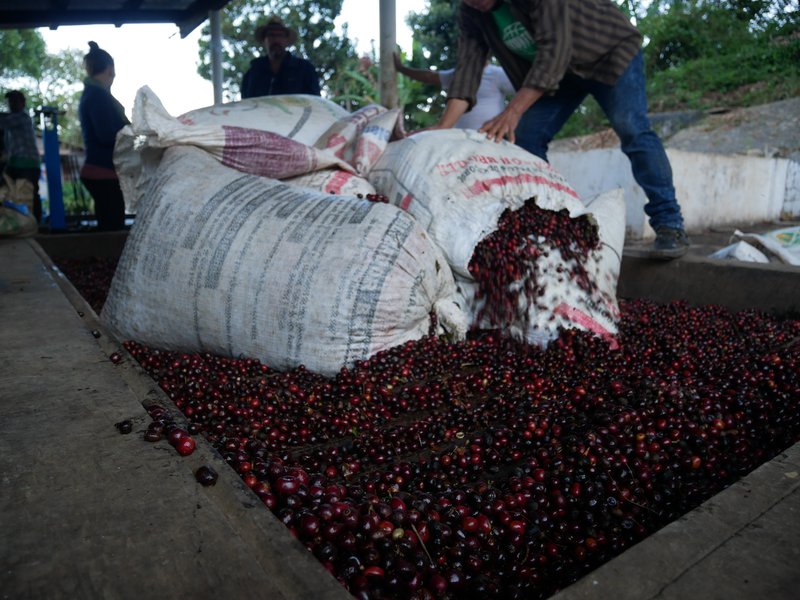
That’s why he asks his workers to pick the coffee red and ripe. When the cherries come to the mill, a manual separation of the ripe has already been made and reviewed. So what comes to the siphon is already the most mature. That is the first selection.
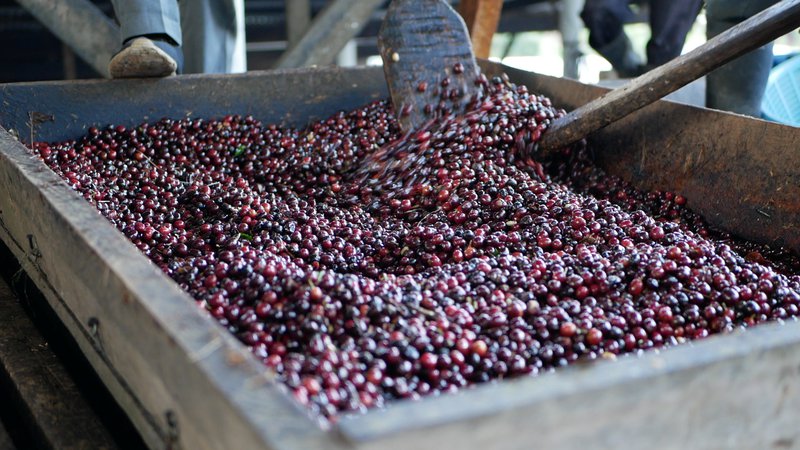
Then comes a classification by density. Coffee that has more density has more quality. Then the floaters (beans that weigh less and float) are separated. On the one hand, the heaviest beans that fall on the bottom. On the other hand, the mildest beans that are processed separately. It is the second separation. They also have a controlled fermentation and drying system adapted to this cloudy region.
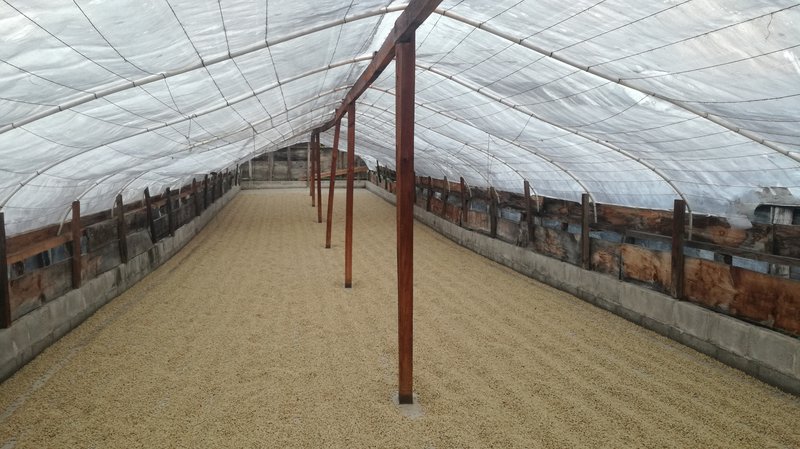
After this brief introduction about the farm, the harvest and post-harvest methods, Teo expresses its concerns about the coffee situation in the country.
“It is necessary to have sustainable management to mitigate the effects”
Climate change
"We are going to experiment more and more heat and extremes between cold and heat." Teo tells us. Due to this increase of temperatures, highlands coffees are gonna change their profile and be considered as coffees of lower altitude. They will lose their acidities. It is necessary to have sustainable management to mitigate the effects of climate change.
On the farm there is a lot of diversity and shade trees (macadamia, avocado, oranges, tangerines ...) that helps to avoid sudden change of temperatures. In addition, Teo started to plant banana trees to use less chemical fertilizers.
"Because the banana is able to trap phosphorus and potassium from the soil while coffee sometimes fails, especially in a compact clay soil," explains Teo. So each year a banana tree will be cut to return all this organic matter captured to the soil and coffee. This system allows not to increase the level of chemical fertilization and thus not saturate the soil and plants with chemicals. It is a sustainable strategy. However, moving to a 100% organic system would be too expensive, especially considering current prices.
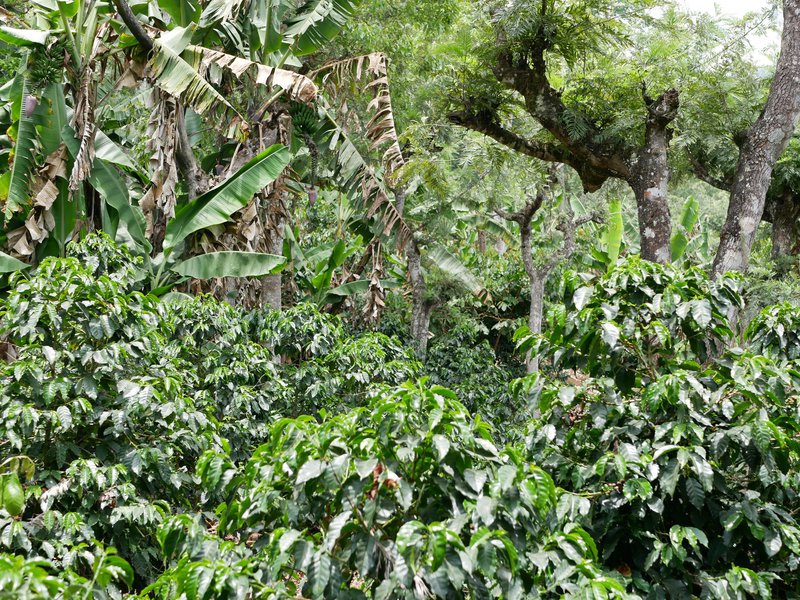
“There is a moment where we [the producers] are not gonna be able to stand it anymore. Either we will stop investing or stop generating. As there is no certainty, it is very difficult to think, invest and work in the long term.”
Price crisis
It is the third year in a row with low prices. It is increasingly difficult to endure for producers, even for the biggest ones. It affects not only coffee growing but the entire economy of a country. “It's already three years of falling prices and we're going for a quarter. I don't think this situation is sustainable for anyone" notes Teo.
Specialty coffee, a solution?
Teo expresses his doubts. What has been sought at the national level is to improve the quality to access a specialty gourmet market where prices are usually better than for conventional. But this represents a small niche where all coffee growers will not be able to enter. Most of the contracts are already filled.
End of the commodity system
"I feel that there is a manipulation by speculators to keep prices low," says Teo. Like many other coffee producers and professionals, he considers that the commodity system is no longer working mainly due partly to its lack of transparency. And it is actually difficult to contest. The consumer never pay less when prices fall. "There are 4 or 5 trading companies in the world that manipulate coffee prices. A change of paradigm does not interest them " says Teo.
Some things have changed however both outside and inside the country. Specialty coffee shops abound in large cities to offer a different consumer experience and raise awareness about quality and traceability. To attract young people also who say they don't want to work in the farm because they don't find any value in this job. With this new trend of specialty coffee, the sector is being renewed, new professions and new interest are generated. Roaster and consumer inside the country and abroad are more aware now and they want to ensure that the price differential paid effectively reaches the producer.
Without these initiatives to encourage better quality and prices, better payments and better living conditions, the tradition, years of work and dedication will be lost. Nonetheless " a lot of people still don't care because ... what they want is their cheap coffee as quickly as possible", concedes Teo .
He is convinced that there is still much to do to improve coffee consumption. He also says that a change is also necessary at the level of production. Producers have to learn how to have a good management of their farm with good and sustainable agricultural practices in the long term. In addition one has to know how to calculate where the costs are. There are still large farmers who do not know their cost of production. One has to analyze.
“The price is the price so that I can continue working, investing and living with this business. Otherwise, why should I stay ? ” concludes Teo.
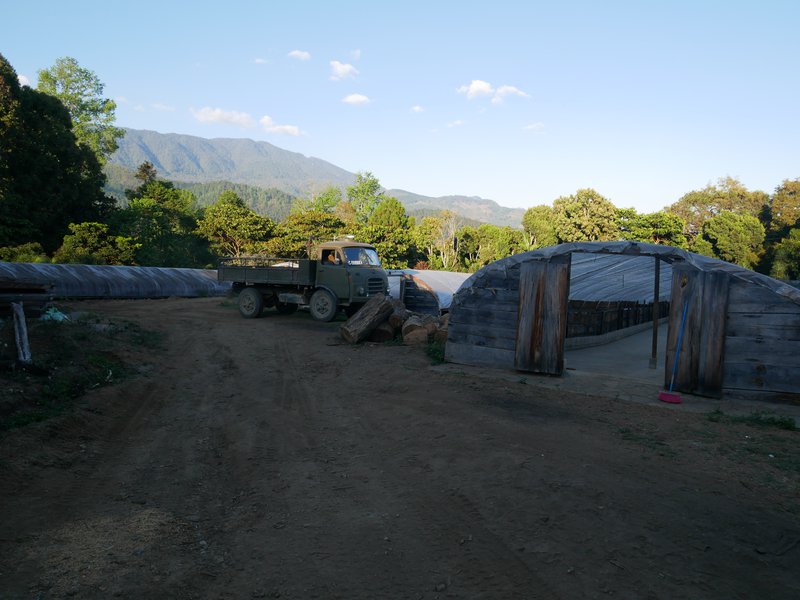

 Guatemala
Guatemala Colombia
Colombia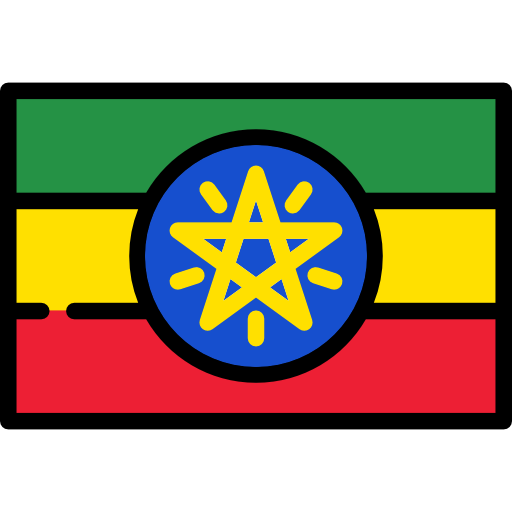 Ethiopia
Ethiopia Indonesia
Indonesia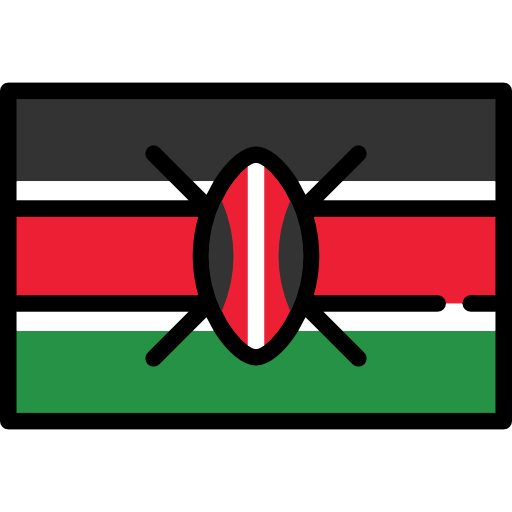 Kenya
Kenya Mexico
Mexico Philippines
Philippines Tanzania
Tanzania Uganda
Uganda